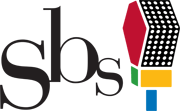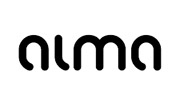Telcos & TV Vie For Digital TV Market.
December 11, 2000
As digital television opens new frontiers, competition between telecommunications giants and the TV industry is rapidly increasing. Ovum, the independent analyst and consulting company, predicts digital television connections will grow from 62 million in 2001 to 350 million in 2006. This will create a raft of opportunities for companies across the new media sector.
Ovum analysis indicates that television commerce (tCommerce) revenues from these connections will be worth $45 billion by 2005. This is in addition to revenues from other services such as pay-TV, gaming, education and information, which will exceed $60 billion.
Shirley Brown, Ovum’s Senior Consultant, New Media Group, summaries the possibilities for Telcos and TV broadcasters within the Digital TV market. She says:
“As Telcos and traditional TV broadcasters are vying for market position each sector must guard its strengths and exploit new opportunities. Television is good at developing and delivering programming content to mass audiences. Telcos’ strengths include strong customer bases, established billing arrangements and effective customer management systems. By guarding existing revenues and building service offerings in the convergent space a market leader will emerge.”
Digitisation of broadcasting transmission breaks down the barriers between the Internet, traditionally a telecommunications domain, and the traditional media-oriented television sector.
Convergence of the two sectors occurs with interactive services offered to consumers either through their television or personal computer. Consumers will be able to send and receive email, browse the Internet, buy goods and services and play games through their television sets. Whilst increased bandwidth to homes via telecom networks will enrich Internet services with broadcast quality video and audio, bringing television to the PC.
Consumers will be able to choose interactive services delivered via an ‘Internet@DTV’ model, using broadcast services such as cable or satellite or alternatively via a ‘DTV@Internet’ model utilising the Internet and telecommunications networks.
The type of service people choose will depend on their preference for information in a communal situation (TV) or as a personal experience (PC). However, the first sector to establish appealing interactive services will gain the most customers and subsequent revenues.
To capture the digital TV market, TV broadcasters and telcos are currently adding new offerings to their traditional product ranges and learning from each other. They are looking outside of their traditional industries and are forging alliances with companies who have experience in the ‘opposite’ sector to assist their growth. These companies include ISPs, portals, content owners, broadcasters and TV platform service providers.
This period of learning and ‘mutual influence’ is changing as broadband infrastructure increases, transmission costs fall and the two platforms contest similar markets.
Competition between telcos and TV broadcasters centres around:
increasing viewer numbers to gain advertising revenue maximising consumer expenditure on transactions (commerce) and
forming alliances for popular entertainment services including movies, shows and video games.
Once television interactive services have reached maturity they will compete head-on with the services offered by the Internet, and similarly the Internet will rival television in information, entertainment and educational video and audio services. Ms Brown says:
“Ovum research indicates that digital television offers huge rewards for those companies that can get it right and retain their customers. Whether that will be telecommunications companies or television broadcasters remains to be seen.”
For more information at http://www.ovum.com .





























